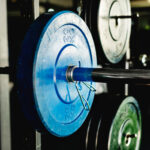Low Back Shenanigans (2 of 4)
Dr. Stuart McGill is smart (or is it smaht?). In any case, he’s essentially the world’s expert when it comes to lower back health and performance. Below is part II of a series of “tidbits” that my good friend Eric Cressey jotted down the last time we listened to Dr. McGill speak. Pay attention gym rats. It’s been said that upwards of 80% of the population will experience some form of low back pain in his or her lifetime; you can thank me for the info later.
6. Shear forces are far more of a concern than compressive forces; our spines actually handle compressive forces really well (think pushing DOWN on a fishing rod). You can’t buttress shear effectively in spinal flexion (rounded back), so it’s important to avoid it – especially at the most commonly injured lumbar spine segments – at all costs. The spine doesn’t buckle until 12,000-15,000N of pressure are applied in compression, but as little as 1,800-2,8000N in shear will get the job done. Take home message: stop training with a rounded back; ALWAYS keep a neutral spine when training.
7. The rectus abdominus (abs) is not about trunk flexion (think crunches); it’s an anti-rotator that is responsible for transferring hoop stresses. If it was about trunk flexion, it wouldn’t have the lateral tendinous inscriptions; we’d have hamstrings there instead!
Side Note: read this blog entry from a few weeks ago and you will see why crunches are pretty much worthless.
8. Don’t just train the glutes in hip extension; really pay attention to their role as external rotators. Once you’ve mastered linear movements (e.g. supine bridges), you need to get into single-leg and emphasis movements like bowler squats and lunges with reaches to various positions. These are great inclusions in the warm-up.
9. Contrary to popular belief, the vertebral bodies – and not the discs – are the shock absorbers of the spine. Amazingly, the elasticity we see is actually in the bone; blood is responsible for pressurizing the bone.
10. End-plate fractures are the most common injury with compression; they almost always are accompanied by a “pop” sound.
P.S. As an interesting aside to all of this, Dr. McGill and I actually spoke at length about the importance of hip mobility – something that obviously is closely related to all twenty of these points. If you lack mobility at the hips, you’re forced to go to the lumbar spine to get it, and that is a serious limitation to building stability. On several occasions, Dr. McGill alluded to Mike Robertson and my Magnificent Mobility DVD, so if you’re looking to protect your back, improve performance, and feel better than you ever thought possible, check it out..



Comments for This Entry
Marpay Fitness
" The spine doesn’t buckle until 12,000-15,000N of pressure are applied in compression, but as little as 1,800-2,8000N in shear will get the job done. - See more at: http://www.tonygentilcore.com/blog/low-back-shenanigans-2-of-4/#sthash.VGjFY2sN.dpufOctober 18, 2013 at 1:14 pm |